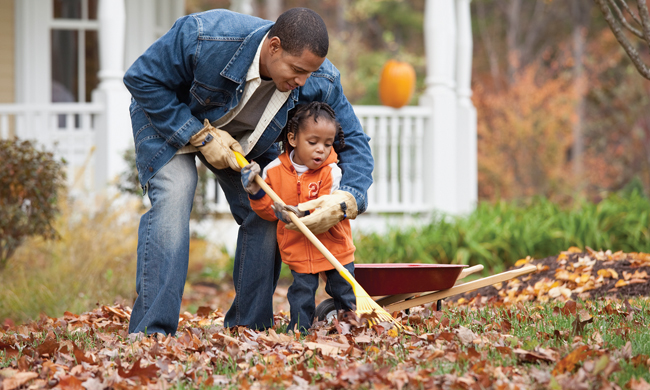6 Tips to Prepare Your Lawn for Winter
Oct 09, 2017 04:34AM ● By Family Features

As days get shorter and temperatures drop, many homeowners overlook their lawns’ needs. Unfortunately, winter can be brutal and make it hard for lawns, trees and shrubs to thrive the following spring.
Just like chapped lips and dry skin, plants struggle to find moisture in the winter, too. Symptoms include scorched and dropped leaves, mottling on leaves and even dead leaves and twigs. Dry or frozen soil can prevent plants from replenishing needed water, which can result in winter burn. In addition, when temperatures drop below a plant’s natural tolerance, it can impact their health and vigor and cause them to decline prematurely.
“Many homeowners may not realize that late fall is a good time to help prepare your lawn and landscape for a healthy spring growth,” said Ben Hamza, director of technical services for TruGreen. “Homeowners should remember to perform common maintenance practices on their lawns and landscapes, such as late fall fertilization on lawns and trees and shrubs, and continue to water during dry periods. Taking the extra time in the fall can pay dividends in the spring.
To help prepare your lawn for the winter months, perform the following practices:
- Clear leaves. It’s important to remove leaves or mulch them with a properly equipped mower as they can suffocate grass. Matted leaves left over a lawn throughout the winter months can delay spring green-up. After clearing leaves, homeowners can compost what was collected to nourish plants and shrubs, reducing the impact on the landfill.
- Replace unhealthy patches. Fall’s favorable weather conditions, as well as moist and warm soil temperatures, create the ideal opportunity for successful seeding of bare lawn areas and overseeding of healthy grass to improve your lawn thickness and density.
- Trim. Trees and shrubs are also vulnerable to winter weather and should be properly groomed and fertilized to avoid winter injury.
- Give a good fall feeding. The roots of lawns, trees and shrubs need energy to prepare for a healthy, green spring revival. Keep fertilizer on target to prevent run-off and sweep fertilizer granules that may reach pavement back onto your lawn.
- Give sprinklers a break. In most parts of the country, failing to winterize your sprinkler system can result in major problems that can also lead to costly repairs, such as cracked pipes, broken valves or damage to the lawn itself. Follow your owners’ manual instructions to safely put your system to rest. Be sure to blow out underground systems to eliminate any remaining water that may freeze and expand.
- Mow against snow mold. Keep lawns trimmed until growth ceases. This can help prevent snow mold, which mostly occurs in northern states due to extended snow cover and matted turf. Tall or improperly mowed grass is most at risk of developing snow mold.
Find more expert advice to get your lawn ready for winter at TruGreen.com.
Photo courtesy of Getty Images




